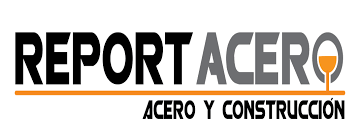Innovation and sustainability play together in metal coating
Innovation in chemistry and nanotechnology has improved automotive components’ quality, durability, and sustainability. Eco-friendly coatings have evolved to offer better protection in automobiles and respond to environmental protection needs. The metals’ surface finish is not just a matter of aesthetics; It represents an essential part of the quality and durability of the final products.
When we think of metalworking manufacturing, the first thing that comes to mind is machinery, tooling, automation systems, peripheral equipment, new materials, and even information technologies designed for each process or activity of a production process, both inside the plant and throughout its supply chain.
But the superficial is also essential and needs to be discussed.
Finishing and Automotive Industry
In the automotive industry, for example, metal finishing plays a crucial role in the protection and beautification of vehicles. From the body to the internal components, finishing processes such as galvanizing, anodizing, powder coating, and painting have improved corrosion, wear, and temperature resistance.
Galvanizing, for example, protects the car body against corrosion, extending its lifespan and maintaining its appearance. Powder coating gives a durable and attractive finish to wheels and other metal parts, while anodizing is applied to aluminum components to improve their strength and appearance.
The chemistry behind these coatings has evolved significantly. Initially, coatings focused on protection and aesthetics. However, recent advances have allowed more specialized and functional coatings to be developed.
For example, nanotechnology coatings, which apply fragile layers of material at the molecular level, have improved scratch and corrosion resistance without compromising the weight or appearance of the metal.
Green Coatings
This technology is valuable in the automotive industry, where reducing weight is crucial to improving fuel efficiency and decreasing greenhouse gas emissions.
And this is no small feat. Sustainability has become a critical factor in the development of new coatings. The industry has responded to the growing demand for more environmentally friendly processes by developing coatings that reduce or eliminate the use of toxic solvents and thus decrease the carbon footprint during application.
One example is electroplating, which is advancing with innovations such as water-based technology, which uses water resources instead of toxic solvents, as in the case of aluminum, and which has been widely adopted by the automotive and electronics industries. Some firms have developed hexavalent chromium-free coatings, reducing health and environmental risks.
Other galvanizing processes are also already available, reducing energy consumption and, thus, the carbon footprint. On the other hand, zinc-nickel solutions offer corrosion protection in the automotive industry, while research into organic electroplating promises a greener alternative to metal coating.
Another notable case is the use of graphene in coatings, as it allows you to take advantage of its strength and flexibility to create finishes that extend the useful life of products and reduce the need for replacement or frequent maintenance. Due to its unique properties, graphene is finding valuable applications in automotive production.
In the coatings sector, graphene improves resistance to abrasion and corrosion, which is crucial for bodywork and components exposed to extreme conditions. Its lightness reduces the vehicle’s overall weight and thus improves fuel efficiency.
Graphene has excellent thermal and electrical conductivity, making it an ideal material for electronic components and batteries, thus enhancing the efficiency and durability of electric vehicles. These applications improve the performance and sustainability of automobiles and open new possibilities in design and functionality.
Beyond the surface
These innovations improve the quality and durability of automotive components and open up new possibilities in design and functionality. Hydrophobic and hydrophilic coatings, for example, offer self-cleaning properties, reducing the need for maintenance and improving the energy efficiency of vehicles.
Looking ahead, it is evident that the metal coating industry will continue to evolve to meet both performance and environmental demands. Nanotechnology, graphene, and green solutions will continue to be critical areas of innovation. Coatings are expected to become even more specialized, with improved properties such as self-healing, improved conductivity, and resistance to extreme conditions.
In addition, data analytics and artificial intelligence will play an increasingly important role in optimizing coating processes. These technologies will allow companies to adapt their coating methods to specific needs and minimize their environmental impact through efficient use of resources and waste reduction.
Metal finishing is an ever-evolving field that not only impacts the quality and durability of products but also plays a crucial role in reducing the environmental impact of the metalworking industry, even though it sometimes seems like a complementary process and not an integral part of manufacturing metal parts.
As coating technologies and practices continue to advance, we will see more efficient, durable, and environmentally friendly products, reflecting a greater awareness of the importance of sustainability in all aspects of manufacturing.
Mandatory trends in metal surfaces
The industry is looking for sustainable solutions in the metal finishing industry, which has led to several emerging trends that are paving the way to a greener and more efficient future.
Graphene coating stands out for its exceptional strength and anti-corrosion properties, contributing significantly to the durability of metals without adding extra weight.
In parallel, nanotechnology is revolutionizing coatings by offering ultra-thin layers that improve materials’ abrasion resistance and longevity while maintaining their lightness.
Eco-friendly electroplating represents another essential advancement, minimizing the environmental impact of traditional coating processes through less toxic materials and more environmentally friendly methods.
Hexavalent chromium-free coatings and environmentally friendly zinc-nickel alloys offer safer, more sustainable alternatives while maintaining high quality and adequate corrosion protection. Hydrophobic and hydrophilic pre-painted metals not only improve durability and make cleaning more manageable but also contribute to the reduction of maintenance and use of resources such as water, aligning with sustainability goals in the industry. In its fight against the clock to balance transformation and environmental care, the industry will continue to emanate new technologies and trends in a constant and sometimes unnoticed evolution. But changes in metal surfaces could occur and show up faster than we think.
Get to know all the Finishing exhibitor experts at FABTECH México. Click here.


















































